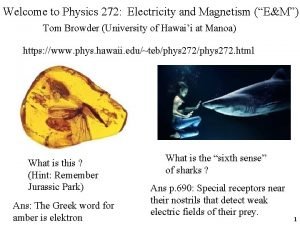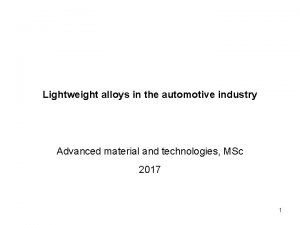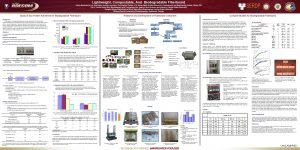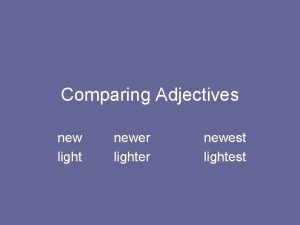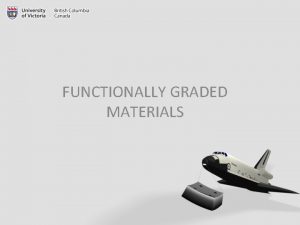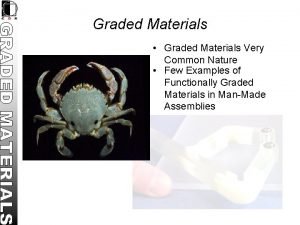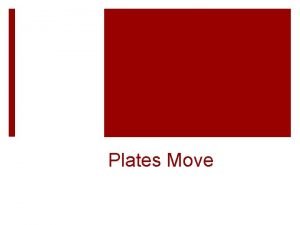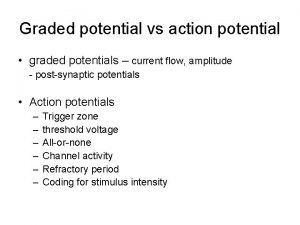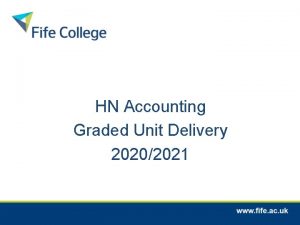Functionally graded materials in the modelling lightweight plates












- Slides: 12

Functionally graded materials in the modelling lightweight plates JAROSŁAW JĘDRYSIAK BOHDAN MICHALAK Department of Structural Mechanics Łódź University of Technology JOWITA RYCHLEWSKA CZESŁAW WOŹNIAK Institute of Mathematics and Computer Sciences Technological University of Częstochow a

Outline 1. 2. 3. 4. 5. 6. Introduction Formulation of the problem Auxiliary concepts Modelling assumptions 2 D-model equations Conclusions

1. Introduction • S. Suresh, A. Mortensen, Fundamentals of functionally graded materials. The University Press, Cambridge 1998. Functionally graded materials (FGM)* are materials, which have properties continuously varying with position within the element to avoid interface problems, such as, stress concentrations, cf. Suresh and Mortensen (1998). (*) The term ”FGM” was introduced in the mid-1980 s in Japan (the Spaceplane project): M. Niino, S. Maeda (1990); M. Koizumi (1992); T. Hirai (1996) Ø Example of functionally graded materials Fig. 1. Etched crosssection of a Japanese sword blade (cf. Suresh and Mortensen (1998))

Ø Examples of composite plates Fig. 2. Fragment of a sandwich-type plate Fig. 3. Fragment of a FGM-type plate

2. Formulation of the problem Object under consideration: linear-elastic plates made of functionally graded material along the axis perpendicular to the plate midplane.

The aim of the contribution: (i) to propose new 2 D-model of elastic plates, made of a functionally graded material, to analyse dynamical problems, employing concepts introduced in the tolerance averaging technique for periodic structures, cf. Woźniak and Wierzbicki (2000). • Cz. Woźniak, E. Wierzbicki, Averaging Techniques in Thermomechanics of Composite Solids , Wydawnictwo Politechniki Częstochowskiej, Częstochowa, 2000.

Ø The dividing of the plate Fig. 4. where: H=ml, l is a segment thickness, m is a natural number, m ‑ 1<<1. Remark The plate is made of the very thin laminae and that is way it will be referred to as the functionally graded laminated elastic plate or the FGL plate.

3. Auxiliary concepts ü ü ü Averaging operation on the segment In Averaging operation on (‑l/2, l/2) Slowly varying sequence : { fn} ÎSV Slowly varying function: f(x, ·) ÎSV Difference quotients : The shape function: g=g(z), zÎ[-H, H] Fig. 5. Example of the shape function

4. Modelling assumptions w=w(x, z, t) - the displacement field of the plate, . Ø Assumption 1 The averaged part of the displacement is linearly approximated. Fig. 6. Ø Assumption 2 The residual part of the displacement is linearly approximated.

Ø Assumption 3 Terms O(e) are assumed to be neglected in the course of the modelling, i. e. : Ø The plate-bending assumptions (for 2 D model)

5. 2 D-model equations Denotations: The microstructural 2 D‑plate model where: underlined terms are dependent on the segment thickness l; where: un=0 if n=0, The macroscopic 2 D‑plate model without the segment thickness l. if n=m.

6. Conclusions Ø The new modelling approach proposed to describe FGL elastic plates is based on the concepts formulated for periodic composites and structures within the tolerance averaging technique, cf. Woźniak and Wierzbicki (2000). Ø The governing equations of 2 D-model of functionally graded elastic plates are derived. Ø Using the proposed model , lightweight FGL plates can be designed analysed, avoiding stress concentrations, typical for sandwich plates.
 My plates pyramid tectonic plates
My plates pyramid tectonic plates Lightweight innovations for tomorrow
Lightweight innovations for tomorrow You have two lightweight metal spheres each hanging
You have two lightweight metal spheres each hanging Lightweight alloys
Lightweight alloys Lightweight fiberboard
Lightweight fiberboard The road not taken figurative language
The road not taken figurative language Lightweight
Lightweight Seven types of figurative language
Seven types of figurative language Honeytoken accounts ata
Honeytoken accounts ata Bnf json
Bnf json Cisco ap 컨트롤러형 설정
Cisco ap 컨트롤러형 설정 Foam concrete poland
Foam concrete poland New newer newest
New newer newest


